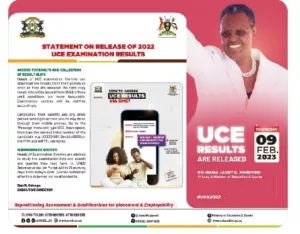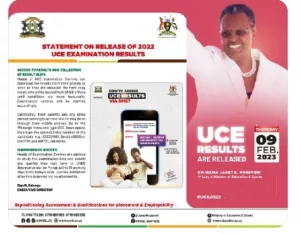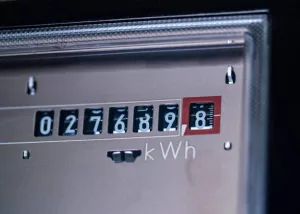Wesley Girls’ integrated science form2 objective questions
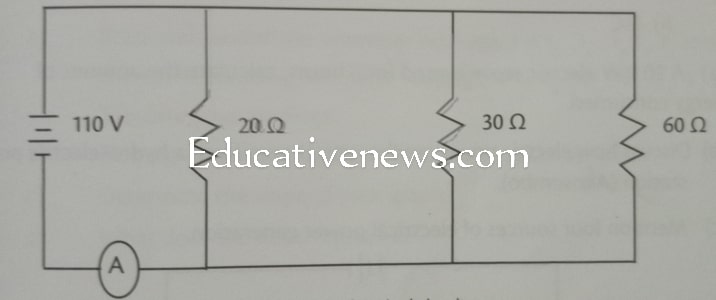
Wesley Girls' integrated science form2
Wesley Girls’ integrated science form2 objective questions bank by topics
Wesley Girls’ integrated science form2 question: These questions have been set for form one senior high school students. The questions prepare students adequately for standard examinations.
Integrated science form2 questions by topics
Acid and bases
1. A substance that donates protons is
A. an acid B. a base C. a neutral substance C. a compound
2. A chemical test for carbon dioxide is that
A. it forms white fumes when passed into a solution of NH4Cl
B. It turns lime water milky
C. A ‘pop’ sound is heard when lighted math is brought near it
D. It turns red litmus paper blue
3. A pH7 is a/an
A. Acidic solution B. basic solution C. alkaline solution D. neutral solution
See also: Wesley Girls’ Integrated Science Question Bank (Objectives)
Soil conservation
4. Which of the following elements is a micro-nutrient
A. Magnesium B. Potassium C. Sulphur D. Manganese
5. The process which involves the reduction of nitrates to nitrogen gas is known as
A. Ammonification B. denitrification C. absorption D. Nitrification
6. Which of the following measures promote the conservation of the forest
I. Land rotation
II. Cutting down trees
III. Planting new seedlings
IV. Creation of forest
A. I and II only B. III and IV only C. I, II and III only D. I, III an IV only
7. Leguminous plants are able to improve upon the nitrogen content of a soil because
A. They do not utilize nitrogen
B. They absorb nitrogen during rainfall
C. Micro-organisms living in their roots fix atmospheric nitrogen
D. Their leaves absorb a high proportion of nitrogen
8. Green manure is beneficial to the soil if the plant material is
A. Grown with fertilizers
B. Free from pests
C. Ploughed into moist soil just before flowering
D. Ploughed into moist soil after harvesting
See also: Prempeh Integrated Science Question Bank (Objectives)
Form 2 integrated science questions by topics
Water
9. Which of the following compounds causes temporary hardness of water
A. Ca(HCO3)2
B. CaCl2
C. CaSO4
D. FeCl2
10. Which method is not used to remove permanent harness of water
A. Distillation B. Boiling C. Addition of washing soda D. Addition of calcium hydroxide
11. Which of the following processes does not take place in domestic water treatment
A. Chlorination B. flocculation C. Neutralization D. Sedimentation
12. The curdy precipitate that forms in kettle when hard water is heated in it is called
A. Filtrate B. distilate C. floc D. fur
Hydrological cycle
13. Which of the following best describes the hydrological cycle
A. A two-wheeler used to measure the flow of water in the Earth system
B. The interconnected, finite movement of water vapour in the Earth system
C. The interconnected endless movement of water in the Earth system
D. The interconnected endless movement of streams in the Earth system
14. Which of the following is currently the largest H2O reservoir on Earth
A. The amtosphere (water vapur)
B. Streams and lakes
C. Glaciers/ ice
D. The oceans
15. Which is the correct sequence of the processes as water moves from the ocean to land in the hydrological cycle
A. Evaporation, condensation, precipitation, runoff
B. Evaporation, precipitation, runoff, condensation
C. Runoff, precipitation, evaporation, condensation
D. Precipitation, evaporation, condensation, runoff
General principles of farm animal production
16. Using the male ratio of 1:150, determine the number of male goats required to mate 750 female goats
A. 6 B. 12 C. 70 D. 15
17. A farmer introduced Rhode Island cocks into his breeds of local hens. His aim was to improve his stock by a method of
A. Selection B. cross-breeding C. inbreeding D. random mating
18. The true stomach of a ruminant is the
A. Abomasum B. Omasum C. reticulum D. rumen
19. Which of the following conditions among domestic chicken can be controlled by dipping
A. Coccidiosis B. Gumboro C. Lice infection D. Newcastle disease
20. In poultry production, temperature is an important factor during brooding because the chicks
A. Have to overcome the stress of transportation
B. Heed adequate ventilation
C. Have no access to natural vegetation
D. Have not developed feathers
Wesley Girls’ integrated science year 2 questions by topics
Excretory system
21. The excretory system in humans consist of
A. The rectum, lungs, skin and kidneys
B. The rectum, liver and kidneys
C. The lungs, liver, skin and kidneys
D. The lung, blood and nephron
22. The wastes excreted from the lungs are
A. Carbon dioxide and excess oxygen
B. Carbon dioxide and nitrogen
C. Water and carbon dioxide
D. Water, salt and bile
23. The outer layer of the skin in mammals is the
A. Egiglotis B. dermis C. epidemis D. epilayer
Reproductive system and growth in mammals
24. The new cell formed after fertilization is known as
A. An embryo B. a foetus C. a zygote D. a seed
25. Gestation period is the time between
A. Fertilization and birth
B. Fertilization and implantation
C. Ovulation and fertilization
D. Implantation and birth
26. The scrotum, which contains the testes is located externally because
A. The sperms will be too far away from the egg if the scrotum is placed internally
B. The temperature for the sperm production should be higher than that of the body
C. The temperature for the sperm production should be lower than the body temperature
D. It will take too much space in the abdomen
Circulatory system
27. Which of the blood cells is described as the erythrocytes
A. White blood cells B. Red blood cells C. Platelets D. Leucocytes
28. The fluid component of blood is known as the
A. Amnion B. lymph C. plasma D. plasmogel
29. The heart is enclosed within a cavity enclosed by a membrane. This membrane is known as
A. Cardiac membrane.
B. Pericardium
C. Pleural membrane
D. Thoracic membrane
30. The congenital defect in the septum of the heart is
A. Stroke B. arteiosclerosis C. hole-in-heart D. leukemia
Wesley Girls’ integrated science form2 questions by topics
Electrical energy
31. Which of the following materials cannot produce electricity
A. A ballon B. a pullover C. wood D. hair
32. In an electrical circuit, the current flows from
A. The positive terminal to the negative terminal
B. The negative terminal to the positve terminal
C. A load connected in the circuit
D. The key when it is closed
33. What is the current flowing through the ammeter in the circuit set up below
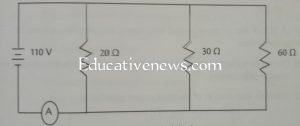
A. 1.0 A B. 0.1 A C. 5.5 A D. 11 A
Electronics
34. Which of the following materials is a semi-conductor
A. Copper B. iron C. silicon D. gold
35. Metals are better conductors of electricity because metals contain more free
A. Protons B. electrons C. positive ions D. negative ions
36. An impunity that is added to a semi-conductor in order to provide holes is known as
A. A donor B. a receptor C. an acceptor D. a bias
Sound energy
37. Which of the following is not an example of a string instrument
A. Clarinet B. guitar C. piano D. violin
38. Which of the following media would sound wave travel fastest
A. Air B. steel C. plasma D. water
39. The part of the ear that is responsible for amplification of sound is called
A. Coati B. cochlea C. ossicles D. pinna
40. The loudest of sound is measured in
A. Weber B. decibel C. hertz D. amperes
Wesley Girls’ integrated science form2 objective questions by topics
Nuclear energy
41. An ionizing radiation that can only be stopped with paper is
A. X-rays B. alpha particles C. beta particles D. gamma rays
42. What is the nature of a beta particle
A. Ionized helium nuclei B. Electromagnetic radiations C. cosmic rays D. high speed electrons
43. Radioisotopes can be used in all the following except
A. Food preservation
B. Sterilization of equipment
C. Child delivery
D. Crop improvement
Magnetism
44. The point on a magnet where magnetic effect is strongest is called
A. Neutral point B. magnetic pole C. magnetic dip D. magnetic flux
45. One of the following devices uses a magnet. Identify the correct one
A. Electric bulb B. electric plug C. loudspeaker D. Resistor
46. Which of the following materials is non-magnetic
A. Iron B. cobalt C. copper D. Nickel
47. The region around a magnet where a magnetic effect or force is experienced is called
A. Magnetic force B. magnetic field C. magnetic strength D. magnetic flux
Force, motion and pressure
48. Which of the following forces acts between two solid surfaces in contact, sliding over each other
A. Viscous force B. upthrust C. frictional force D. centripetal force
49. When a body is partially or wholly immersed in a fluid, it displaces its own weight of the fluid. This is an exact statement of
A. Archimedes principle
B. Law of flotation
C. Pascals principle
D. Newton’s law of motion
50. The rate of distance with time in a specific direction is known as
A. Speed B. velocity C. displacement D. acceleration
Wesley Girls’ integrated science year2 objective questions by topics
Safety in the community
51. The organization that delivers humanitarian assistance to victims of was is
A. Food and Agriculture Organization
B. Red cross
C. United Nations Children Fund
D. World Health Organization
52. Personal hygiene involves
I. Brushing the teeth regularly
II. Cutting the hair
III. Combining the hair
IV. Sweeping the compound
A. I, II and III only B. I, II and IV only C. II, III and IV only D. I, II, III and IV
53. All these are effects of hazardous substances on the body except
A. Blindness B. nausea C. respiratory disorders D. breeding of mosquitoes
Endogenous technology
54. In the production of soap, the reaction between an oil and alkali is called
A. Fermentation B. saponification C. esterification D. homogenization
55. The production of shea butter mainly involves using the
A. Fruits of the shea nut
B. Seeds of the shea nut
C. Both fruits and seeds of shea nut
D. None of the above
56. The term endogenous technology means
A. Using local indigenous technology in production
B. Siting small scale industries in rural areas
C. Blinding local indigenous technology with modern technology in production
D. Using modern technology to produce
Biotechnology
57. A solution of food nutrients that is used to grow very pieces of tissue is called
A. Soil B. digester C. culture medium D. cultivation
58. Small plants that grow on nutrient medium with new roots and shoots are known as
A. Seedlings B. Plantlets C. Embryo D. Explants
59. The process of inserting a new DNA in an organism is known as
A. Genetic engineering
B. Disinfector
C. Reproductions
D. Tissue culture
Work and machines
60. Which of the following units is a unit for both energy and work
A. Watt B. joule C. newton D. pascal
61. A block and tackle pulling system has two fixed pulleys and one moving one. What is the velocity ratio of the system
A. 2 B. 3 C. 4 D. 5
62. A lever is a machine which rotate about a fixed point called
A. Effort B. pivot C. axle D. wedge
Post Disclaimer
The information contained in this post is for general information purposes only. The information is provided by Educative News and while we endeavour to keep the information up to date and correct, we make no representations or warranties of any kind, express or implied, about the completeness, accuracy, reliability, suitability or availability with respect to the website or the information, products, services, or related graphics contained on the post for any purpose.

